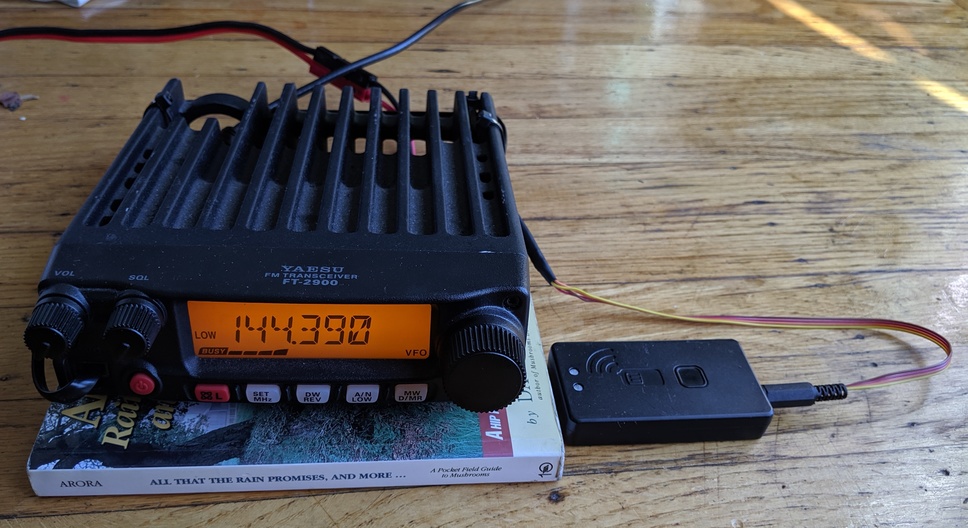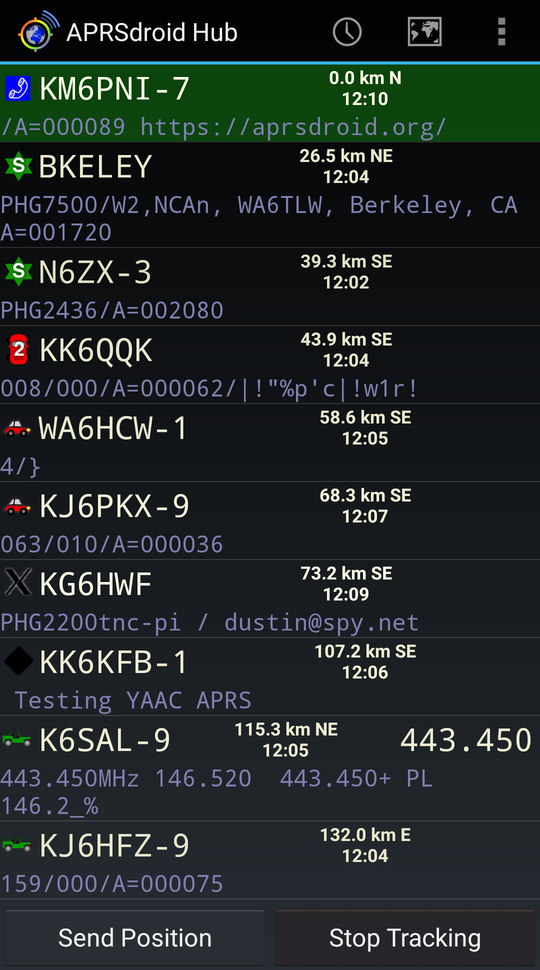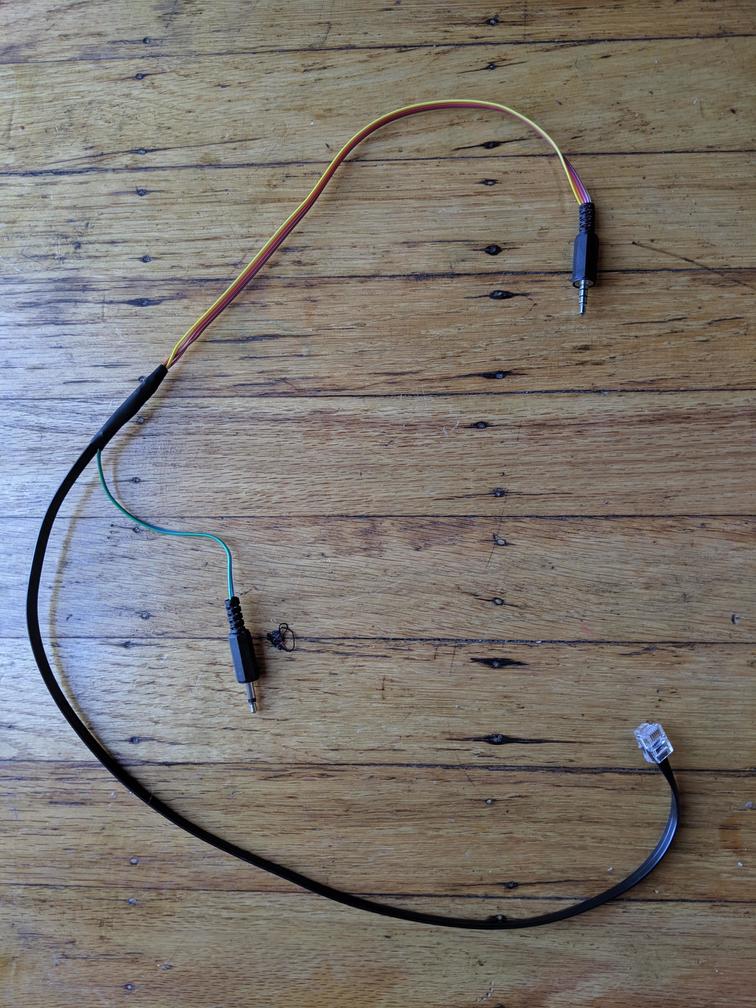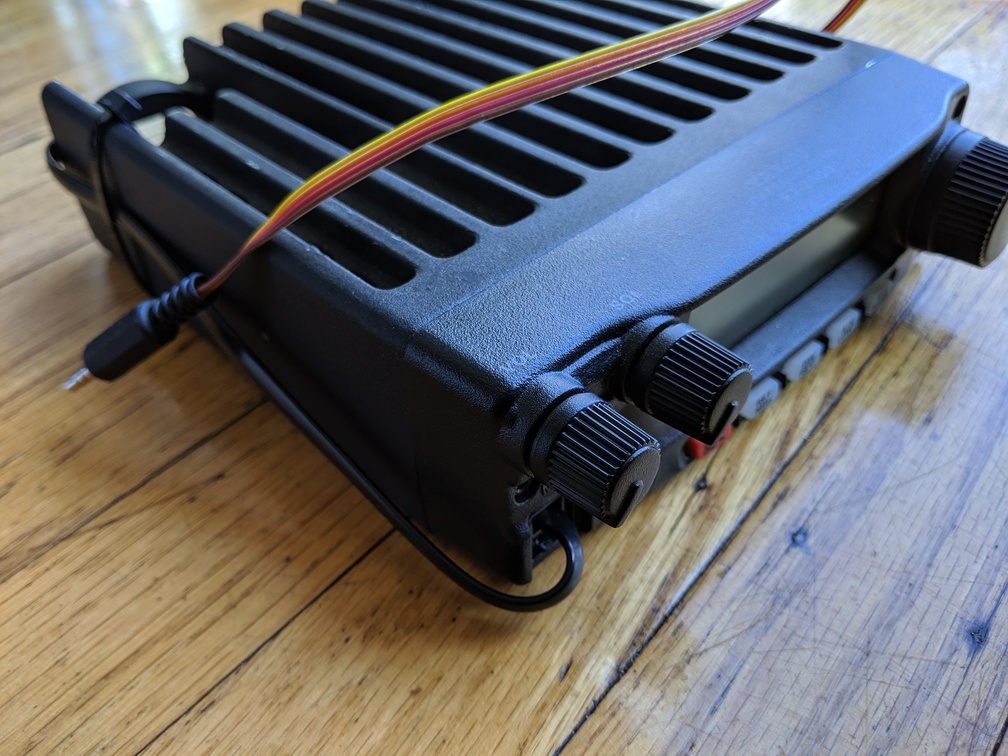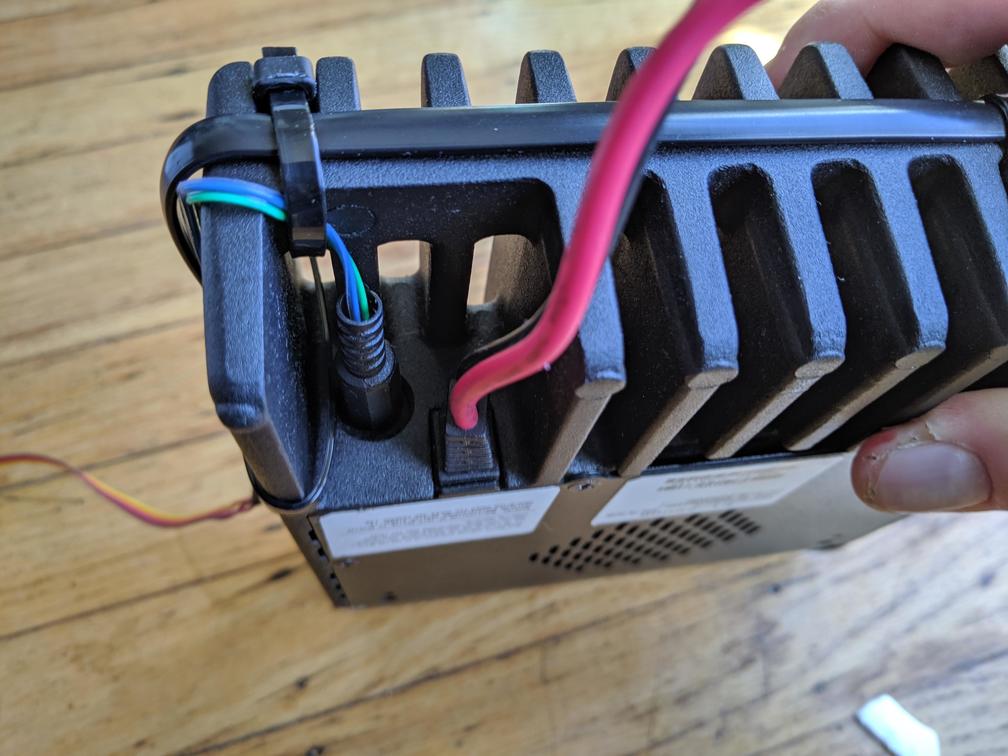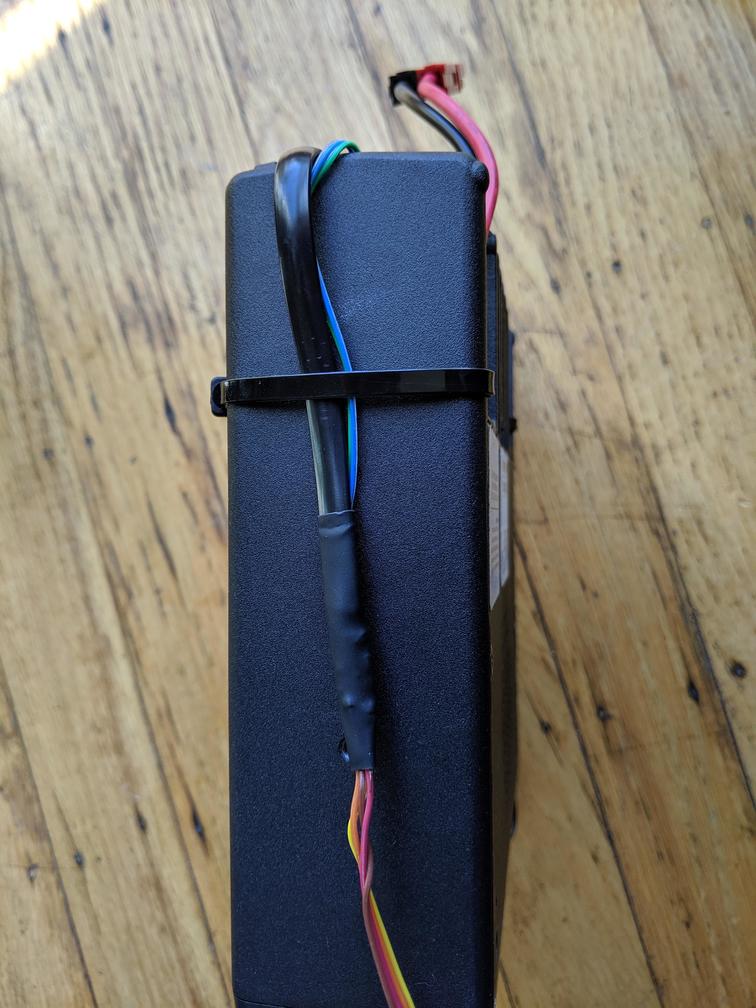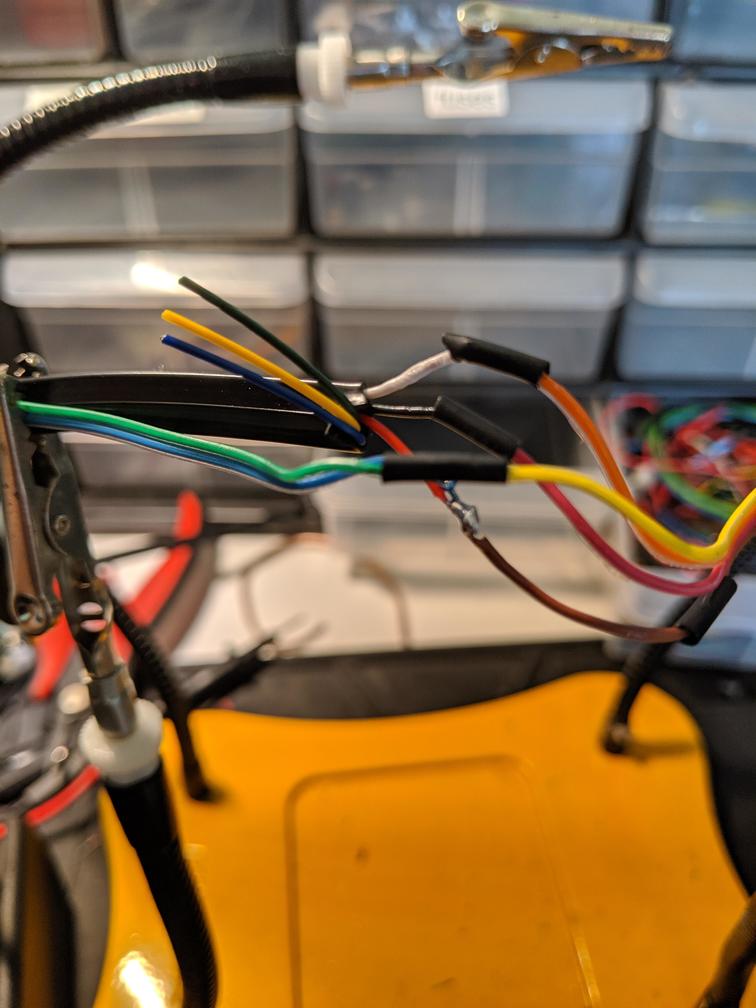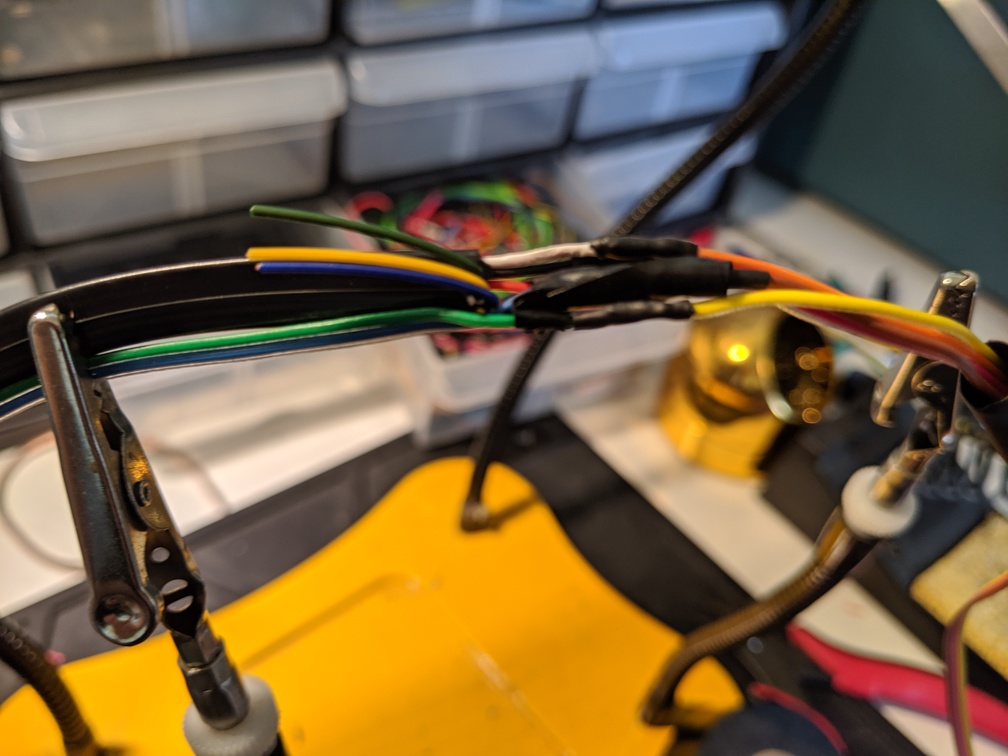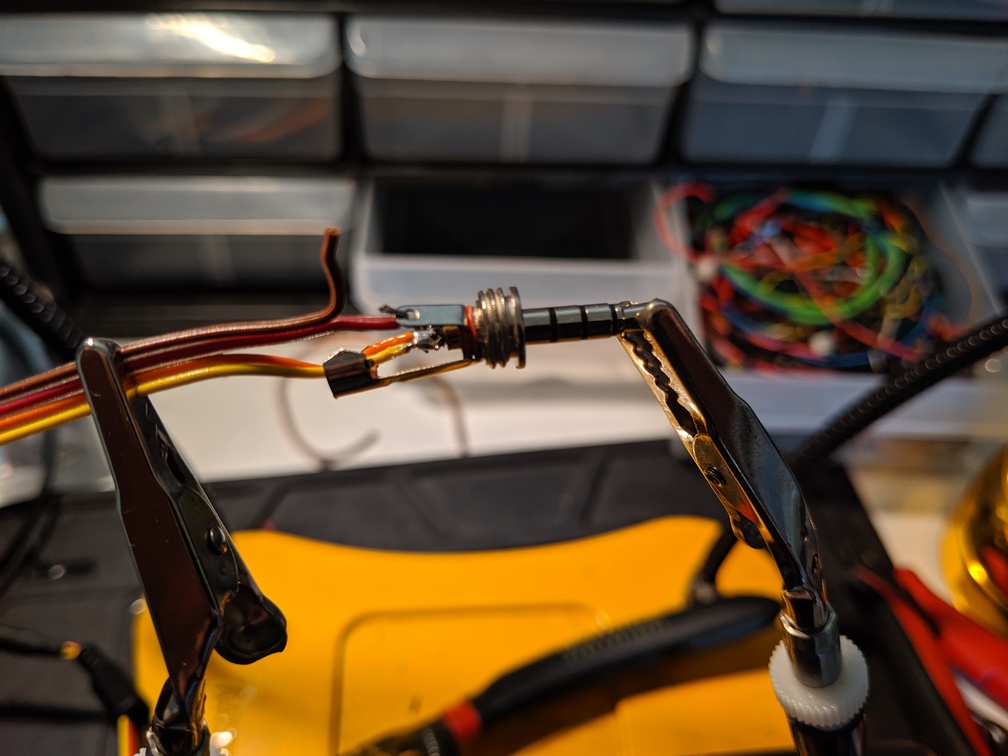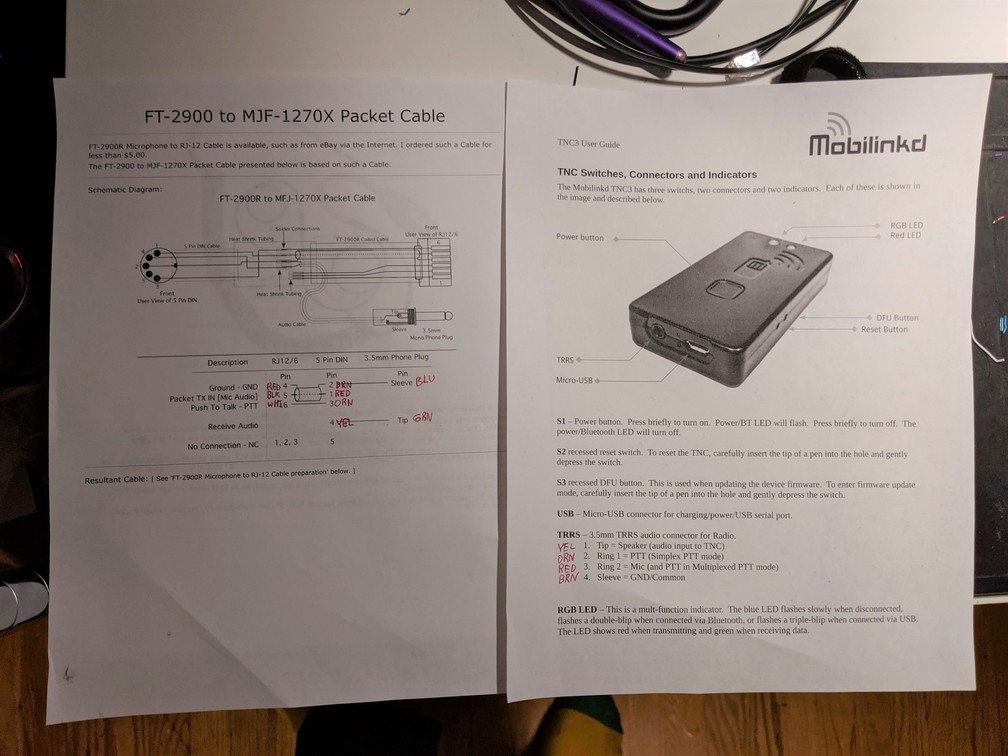APRS with the Yaesu FT-2900R
This is a short write-up about using APRS with the Yaesu FT-2900R mobile radio. For those who aren’t familiar, APRS is a global network which allows sending GPS position updates, text messages, and other data over ham radio, mainly 2 meter FM. APRS “digipeaters” relay these messages by radio and “IGates” send them to the Internet, allowing global communication.
Here’s the radio in action, with a Mobilinkd TNC3 at right (more on this little device later).
The FT-2900R seems to be a great choice for APRS. I receive lots of packets and even at 5 watts, my packets get through to several digipeaters/IGates in the area. The FT-2900R can output up to 75 watts; while this is much more than is typically used for APRS, it could be useful in remote areas far away from other APRS nodes. Despite its high output power, the FT-2900R is fanless; the entire case serves as a giant heatsink. As a result, it is built like a tank and will hold up in demanding environments. Finally, it is affordable on the used market; I got two for $200 total on /r/hamfest.
My antenna for this test is a MFJ-1729 magnetic mount antenna on top of a metal baking tray, which acts as a primitive ground plane. A roll-up J-pole is another convenient option for portable use. For a directional link to a faraway digipeater or IGate, a homemade yagi might work well.
The Mobilinkd connects to my Android phone over Bluetooth. Using APRSdroid I can send position reports, see a list or map of other stations, and send and receive text messages. I can even use SMS and email through appropriate gateway services. This could be quite useful in a remote area with no cell coverage, or in an emergency where the cell network is down. (Note that, like everything on ham radio, APRS messages are public information.)
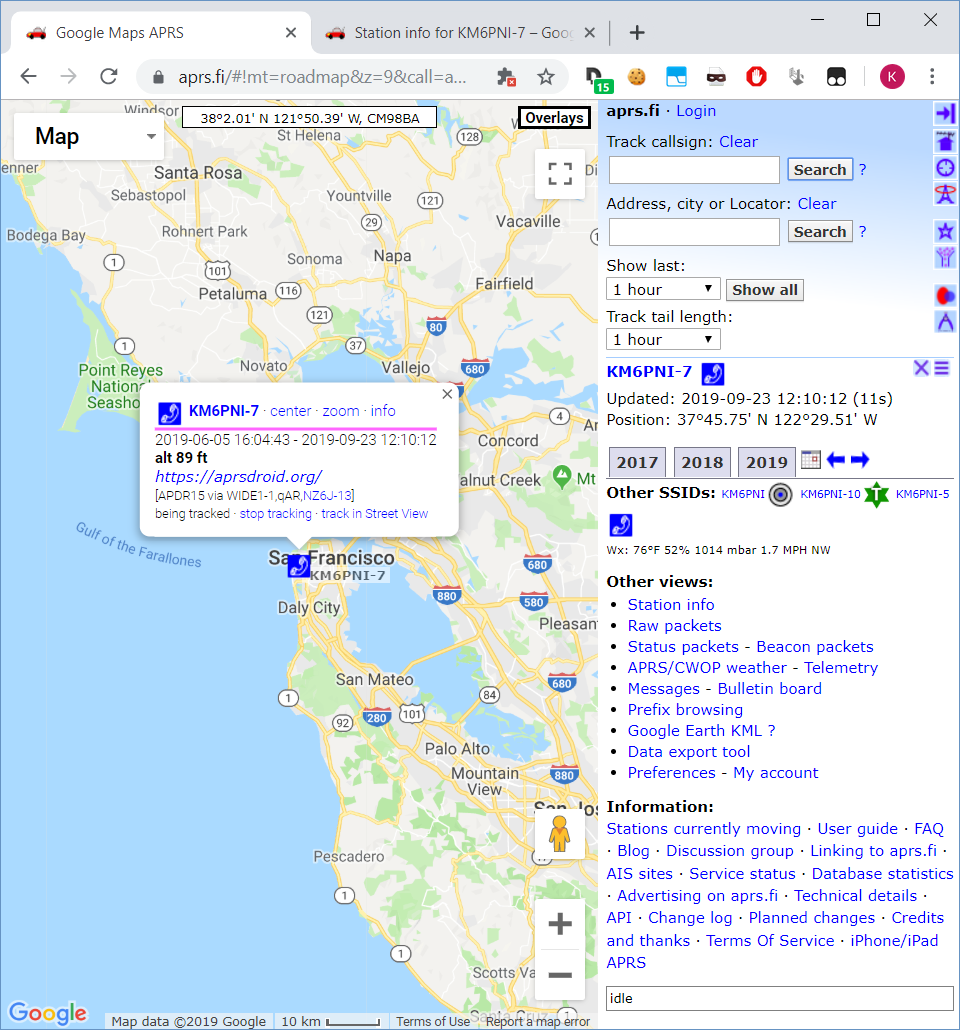
Because my position updates reach an IGate, my location appears on aprs.fi.
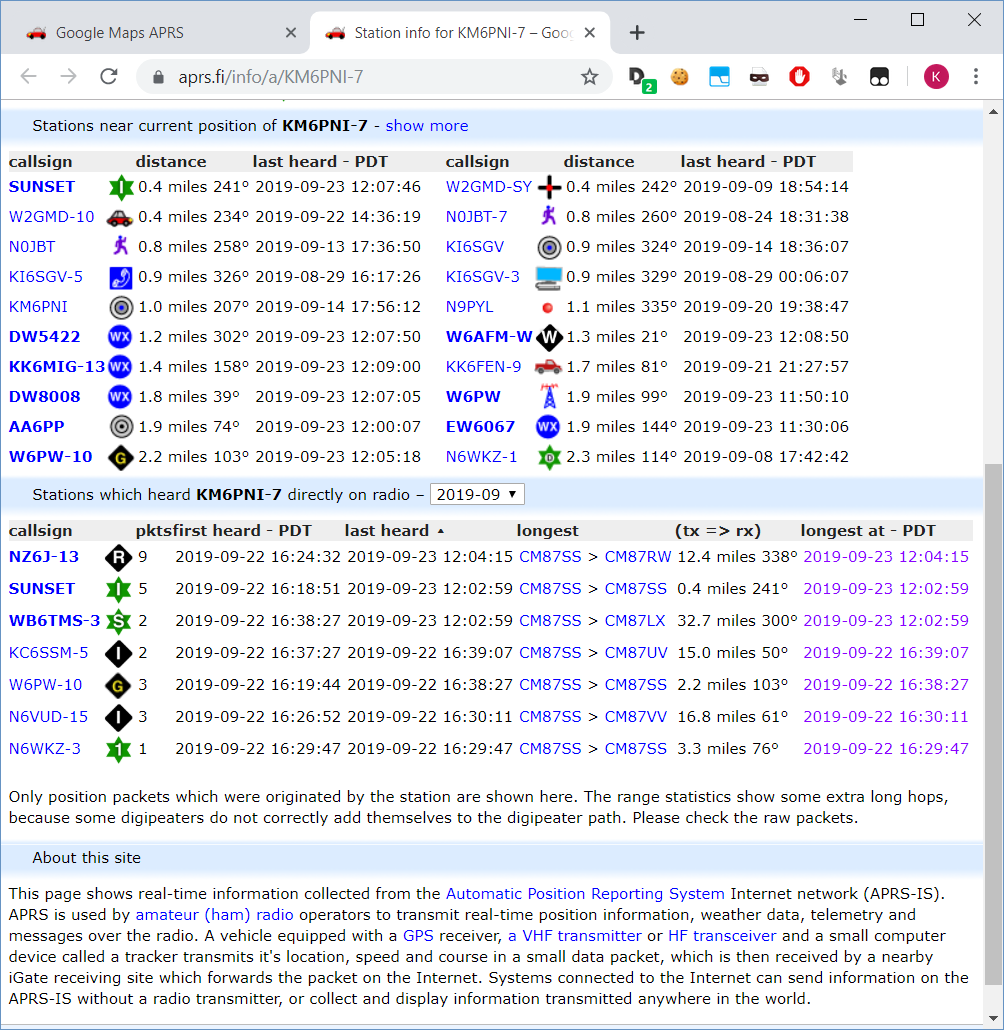
In addition to the map, a lot of other station information is available on the website. As you can see, a number of nodes are able to hear me — the top 3 at only 5 watts.
The cable
The big disadvantage of the FT-2900R in this application is that I had to build a strange custom cable to connect it to the TNC. APRS packets are encoded as audio tones sent over FM radio. The TNC is a modem1; it modulates bytes into tones and demodulates the incoming tones back to bytes, very much like the modems we once used for dial-up internet. Its interface to the radio consists of bidirectional analog audio, plus a “push-to-talk” (PTT) signal which tells the radio when to transmit. Newer Yaesu radios have a dedicated “DATA” jack on the rear which provides all of these signals; however, the FT-2900R does not.
The workaround is this three-headed cable…
…which plugs into the front-panel microphone jack…
…and also the rear speaker jack.
These two connections are spliced onto the cable which connects to the TNC. A piece of heat-shrink tubing covers the splice.
Once zip-tied to the chassis, the wiring is relatively tidy.
Building the cable
The cable was not too difficult to make. If you have a bit of soldering experience, it should take only an hour or so. I started with a RJ12 patch cable, a 3.5mm TS plug for the speaker jack, and a 3.5mm TRRS plug for the TNC.
Here I have just finished splicing the three microphone-jack connections (audio, PTT, and ground), the two speaker-jack connections (audio and ground) and the TNC side of the cable. The three wires at the top left remain unconnected; they connect to the pins on the RJ12 jack that aren’t used for this project.
Bundled up and ready for the outer heat shrink.
The hardest part was soldering the TRRS plug, especially the inner pin. After all four wires were connected, I crimped the tabs (bottom left of connector) around the cable. I did the same on the speaker plug (not shown).
I made notes about the color of each wire so I could connect everything correctly. The printouts are from this page and the Mobilinkd TNC3 manual.
Future plans
My long-term plan is to replace the TNC with a Raspberry Pi running Direwolf and put everything in an ammo can. Then I will have a rugged, self-contained digipeater that I can deploy in a remote area or for emergency use. I can, for example, carry my handheld radio and the Mobilinkd and use APRS whenever I am within radio range of the portable digipeater.
For power I’ll use my solar battery box or any other 12V (really ≈13V) power supply. The digipeater can also report its own status (battery voltage, temperature, etc.) over APRS. I’ll include an external WiFi antenna for IGate functionality when an Internet connection is available. Other possibilities include a GPS receiver and 3G/LTE connectivity.
Of course, the cable I made is not limited to APRS. I could use it for AX.25 networking, DTMF-based remote control of some device, a voice mailbox system or anything else that involves a computer sending and receiving audio on 2 meter FM.
Although everything seems to be working great, I do worry about RF interference into the audio cables. If that becomes a problem, I will try shielded audio cables. A metal ammo can, with openings much smaller than 2 meters, will also provide some shielding.
Thanks for reading and stay tuned for updates on this project!
Footnotes
-
TNC stands for terminal node controller. These were originally quite feature-rich devices, but over time more and more functionality has been moved into the host — in this case, my Android phone. The Mobilinkd TNC3 is just a modem which speaks a very simple frame-based serial protocol with the host. It doesn’t know anything about APRS per se. ↩
